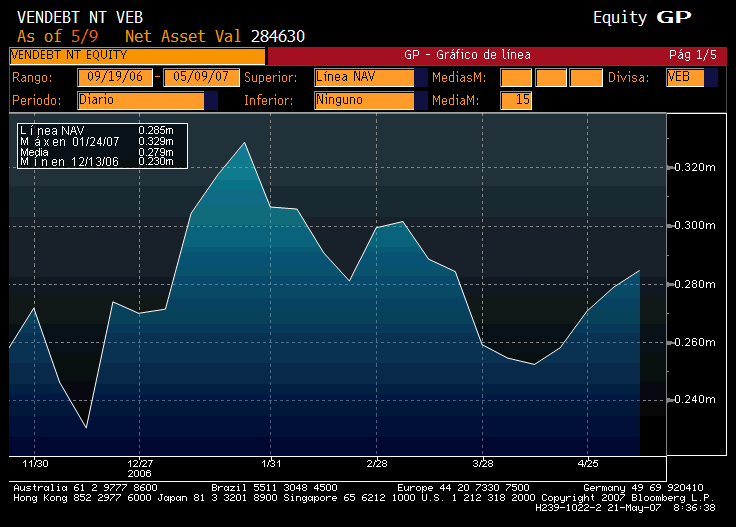This month, investors absorbed some important news announcements, among them: the nationalization of the last four oil fields, a 35% drop in Central Bank Reserves, the IMF-withdrawal statement and the threat to nationalize the banking industry. Below we will try to figuratively deconstruct what these messages may mean for all “three” sides of the fence.
THEIR SIDE
Suppose you are subsidizing several economies at once, including yours, but their demands keep increasing every month. Unfortunately, last July your economy’s gross monthly income suddenly stopped growing and has actually been decreasing since then. In effect, you have been running an escalating deficit that only became publicly visible when you had to pull out 35% from savings, even after issuing the largest one-day debt obligation in history. Yet, you tell creditors (especially those holding your currency) you are merely switching pockets and… they believe you. But, there is another problem, in the past few years, although you repurchased every external-debt bond submitting you to SEC surveillance, you still belong to a guild you must regularly open your financial books to. How do you get them out of your hair? Simply drop out. Foreign creditors may be a bit flabbergasted at first, but not to worry, they always come around. Finally, there is the issue of how to prevent local creditors from eventually deciding to cash in their chips and try their luck elsewhere. Easy, tell them that the tellers are just part of the casino and as such they can be nationalized anytime, together with the chips. At least you forewarned them!
YOUR SIDE
All this time, no matter how obvious the direction we are going, there has been little you could do. In fact as time has passed, you have accumulated the largest amount of chips you ever had, because even after it became legal to exchange chips [through negotiable securities]; converting them would cause an accounting loss. By now the size of that potential loss is so huge; it leaves you no choice but to let balances grow and accept the puny interest rates they pay you locally. To top it all, the nationalization threat just complicated things further, because, no matter how big, well-known or international your local chip-holder is, as long as your account with him is under local jurisdiction, it just became an immeasurable risk.
OUR SIDE
Not everything is bad news though, until recently, no mechanism existed that allowed you to maintain your assets free from the risk of devaluation and/or nationalization, while keeping them in local currency. Last November, our parent company unveiled a Money Market Fund whose shares are local currency denominated, but as shown in the Bloomberg price-history graph below, they track exactly the movements of the parallel rate (shown in the next graph). This price behavior allows you to hedge against devaluation without converting your chips to foreign currency (to avoid conversion losses). But the best feature of the fund is that it completely shields your assets from intervention: No matter what laws are changed or how many banks get nationalized, they have no jurisdiction over the fund. Additionally, as in any Money Market Fund, shares are 100% redeemable and can be liquidated every Friday in any currency you want.
If you would like to know more about the fund and why the financial service providers behind it are as large and trustworthy as your local provider, just send us a note to corporate@sequoian.com



Leave a Reply